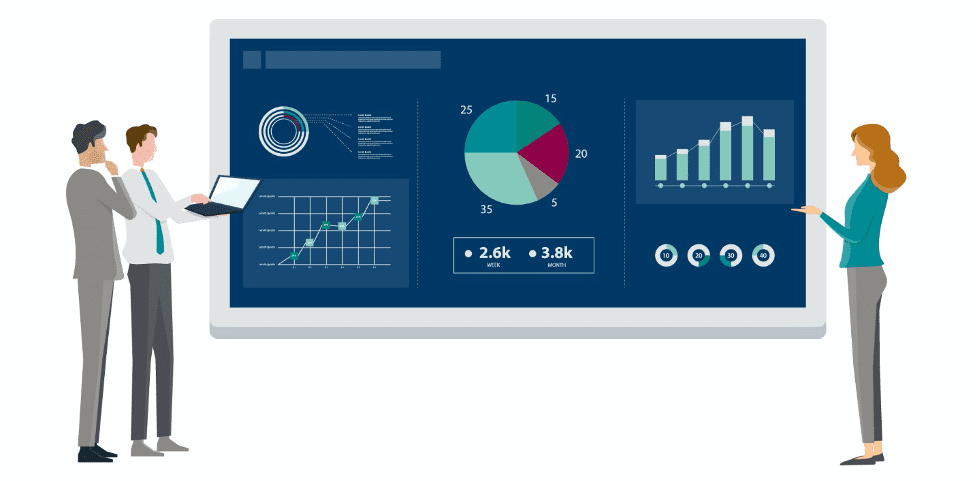Drive Financial Transformation With A Holistic Approach
Blog post
Share
According to a 2020 Forrester Report, a leading priority for enterprise organizations is finding a technology solution to effectively address challenges across the entire Record to Report (R2R) process. Although point solutions may temporarily improve some complications in financial processes, issues with data availability and accuracy in complex ERP environments still arise. To ensure the accuracy of your financial reporting and effectively transform the Office of Finance, organizations must approach their R2R process holistically — meaning, they need to evaluate everything in the process end-to-end as well as the individual processes.

Importance of Adopting a Holistic Approach
To understand why adopting a holistic approach is necessary for a financial transformation project, it is important to recognize the main problems involved with traditional manual processes and complex ERP environments.
“On average, respondents reported using nine ERP vendors and 18 globally deployed instances. This creates extreme complexity and causes organizations to spend far too much time on manual, low-value tasks, and it diminishes decision makers’ confidence in their ability to keep pace.”–Leveraging Advanced Technology to Succeed In A Complex Financial Environment, Forrester Consulting
Due to the specialization and limited focus of point solutions, solving each problem that occurs results in the implementation of multiple point solutions. This “band-aid” effect only increases complexity and risk, creating disjointed data and unreliable reporting.
Challenges of Implementing Patchwork Solutions for Automation
With patchwork solutions, employees spend a majority of their time on risk-prone manual processes or looking for information in different areas. This hinders the ability of the office of the CFO to effectively deliver financial statements and critical business insights in a timely manner as required.
According to the Forrester Report, 90% of respondents experience similar challenges with the financial close process citing it as “time-consuming, at risk of experiencing manual errors and under-supported.”
Integration of Diverse ERP Systems
To meet increasing demands, and adapt in today’s ever-changing business environment, investment in a financial transformation project is critical, especially when it comes to a holistic financial close solution. Even as organizations continually work to simplify their ERP environments, the road to a single ERP environment is extremely long or, in some cases, not realistic at all. Allowing ERP long-term projects to continue delaying a financial transformation in the workflow within the Office of Finance will only increase risk for the business. Instead, implementing a supplemental financial close solution that can seamlessly integrate with the organization’s existing ERP ecosystem (no matter how complex it may be) should be a top priority.

“Organizations should do what they can in the short run to reduce risk, cost, and to improve operations within their existing ERP environments. By integrating into existing source systems and standardizing and automating financial close processes, organizations can lower risk of human error and recover valuable time.” – Leveraging Advanced Technology to Succeed in A Complex Financial Environment, Forrester Consulting
The ability of a supplemental financial close solution that integrates with an organization’s current and future infrastructure (regardless of increased M&A activity or other events) will enable increased visibility into data and processes while reducing the risk of financial error.
Utilizing a System of Integration and System of Controls
The Office of Finance needs technology that drives departmental efficiencies and opens up time to be the strategic partner the organization needs. The increased workload demands are not going away, therefore the only way to keep heads above water are to automate what can be automated with technology and free up the time for human ingenuity to be applied to higher-value areas. Utilizing a supplemental financial close solution with an effective System of Integration that works with complex ERP environments and establishing a clear System of Controls, where all processes (like reconciliations, journal entry management, intercompany reconciliations, and close task management) are standardized, ensures effectiveness and reducing risk during your period-end close. This guarantees that reliable financial data will be shared across finance and non-finance departments to drive strategic decisions.
Future-Proof Your Financial Close
Taking a holistic approach to your entire Record to Report process by implementing a supplemental financial close solution like Cadency ensures the accuracy of your financial reporting and agility of your Office of Finance to handle increasing demands. Implementing the right technology that integrates with your current ERP environment will bring accuracy, consistency, and automation to the financial close. The Cadency® System of Accounting Intelligence combines advanced automation technologies and strategically applies them to support the complex R2R process from end-to-end.
“Cadency allows us to have greater visibility and control over the business process across all companies and geographies. This enhances our ability to ensure consistency and data quality, while reducing our operating costs.” -Ahold Delhaize
Explore how finance leaders are effectively handling complex ERP landscapes within their financial transformation project.
Written by: Karagan McConkey








